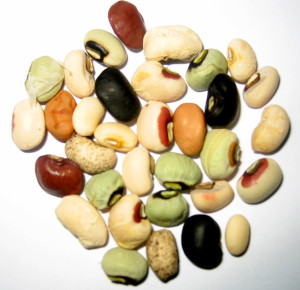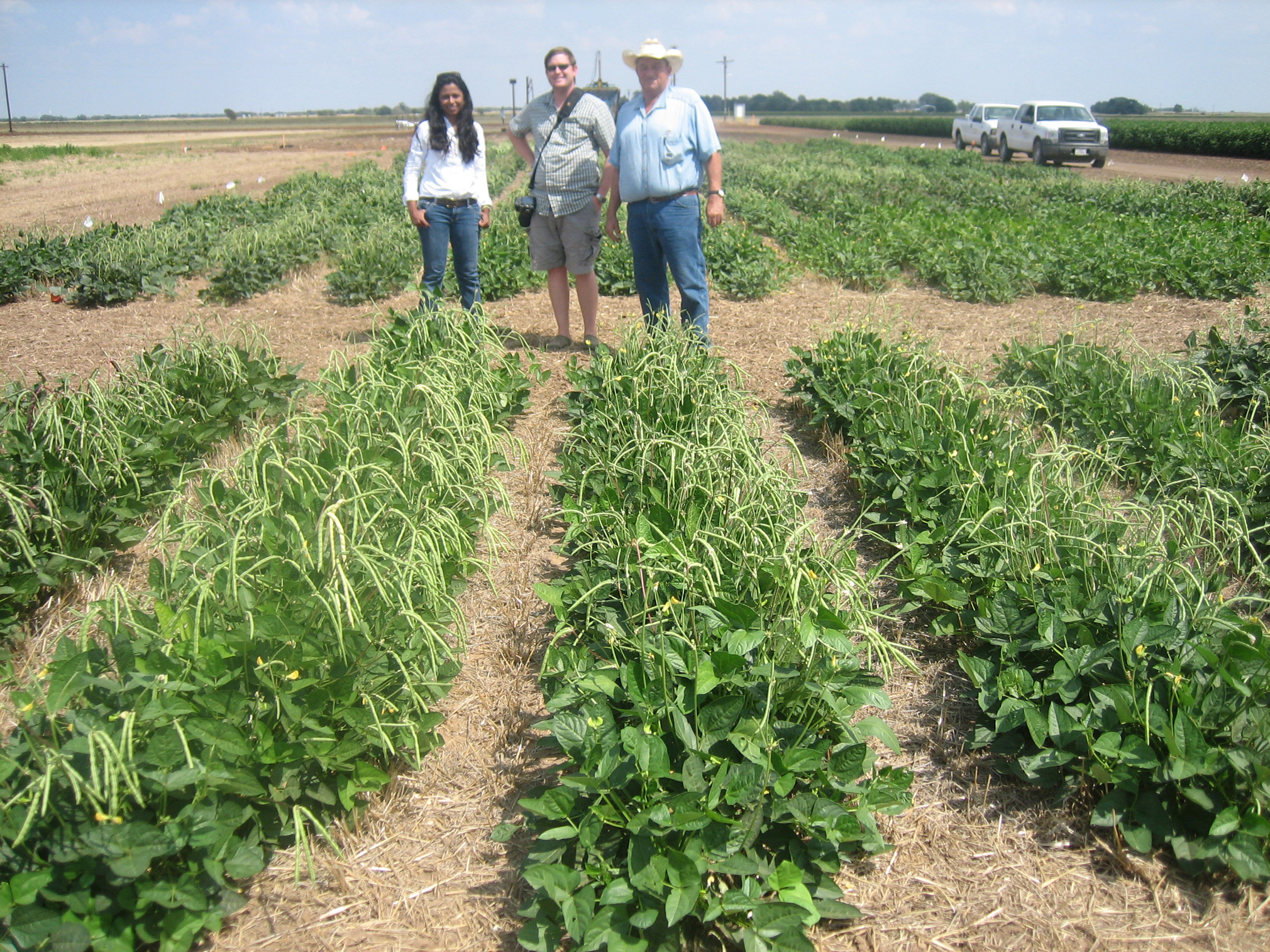College Station, Texas, USA
January 30, 2016
Everyone who ate their “good luck” black-eyed peas on New Year’s Day helped kick off the celebration of 2016 as the “International Year of Pulses,” according to a Texas A&M University visiting professor.

A mixture of cowpea seeds grown around the world. (Texas A&M AgriLife Research photo by Dr. B.B. Singh)
Pulses are food legumes, which are edible seeds, said Dr. B.B. Singh, a cowpea breeder in the Texas A&M soil and crop sciences department. Pulses include dry beans and peas, pigeon peas, chickpeas, lentils and cowpeas such as Crowder, black-eyed or southern peas.
“Pulses are good for human health, livestock health and planet health,” Singh said. “Almost three-quarters of the world population derive most of their protein requirements from pulses. Therefore, the United Nations has declared 2016 as the International Year of Pulses to create greater awareness among the people to produce and consume more pulses.”
Singh said pulses are rich in protein, 20-25 percent, and have very little fat. They are rich in vitamins, minerals and fiber, and have complex carbohydrates, making them “so very good for health and heart.”
They emit less carbon dioxide compared to other crops, and their fodder is also rich in protein and good for livestock health, he said. Also, legume crops fix nitrogen from the air through nodules in their roots and contribute to improved soil fertility.
Singh is most familiar with the cowpea, which was introduced to the U.S. in the 17th century and became popular in the southern U.S. where the climate is warm and more suitable for cowpea cultivation. World cowpea production has increased from about 1 million tons in 1981 to more than 7 million tons now.
“I hope I have played a catalytic role in developing the next generation of cowpea varieties, which will be adaptive to changing climates and multiple cropping systems and contribute greatly to the increased production and consumption of cowpeas in the world,” he said.
Singh wrote the book, “Cowpea: The Food of the 21st Century,” which was published by the Crop Science Society of America in 2014. He researched black-eyed peas for 27 years at the International Institute of Tropical Agriculture in Nigeria, where he developed more than 35 improved cowpea varieties released and grown in more than 40 countries.
After retiring from the International Institute, he joined Texas A&M in 2007 as a visiting professor and began working with a Texas A&M AgriLife Research team of scientists on projects in the U.S. and Africa.
Currently AgriLife Research’s breeding program is concentrating on breeding stress-resilient cowpea varieties by combining traits that include early maturity, high yield and resistance to major biotic and abiotic stresses, he said.

Texas A&M AgriLife Research’s cowpea breeding trial at Vernon shows off stress-resilient varieties. (Texas A&M AgriLife Research photo by Dr. B.B. Singh)
“With Texas being a hot and dry state, the major focus is to breed for tolerance to heat and drought,” Singh said. “We have made good progress in these areas using the improved germplasm from Africa as well as the U.S. New breeding populations have been developed from which high-yielding and improved varieties are being selected.”
Some new breeding lines being tested in the U.S. and Africa combine early maturity with resistance to aphids and bacterial blight, as well as provide tolerance to heat, drought and low soil phosphorus. They are yielding between 27-45 bushels per acre within a maturity period of 60-70 days.
Singh said the studies conducted by AgriLife Research have shown that “most of the farmers in the southern U.S. can successfully plant an early maturing cowpea crop after harvesting a wheat crop in June, thus, ensuring a wheat-cowpea double-cropping each year.
“This rotation is a win-win situation because the additional cowpea crop not only provides extra income and efficient use of resources, but also provides protein-rich fodder for the livestock and improved soil fertility for the following wheat crop.”
More information on the International Year of the Pulses can be found at http://iyp2016.org/.